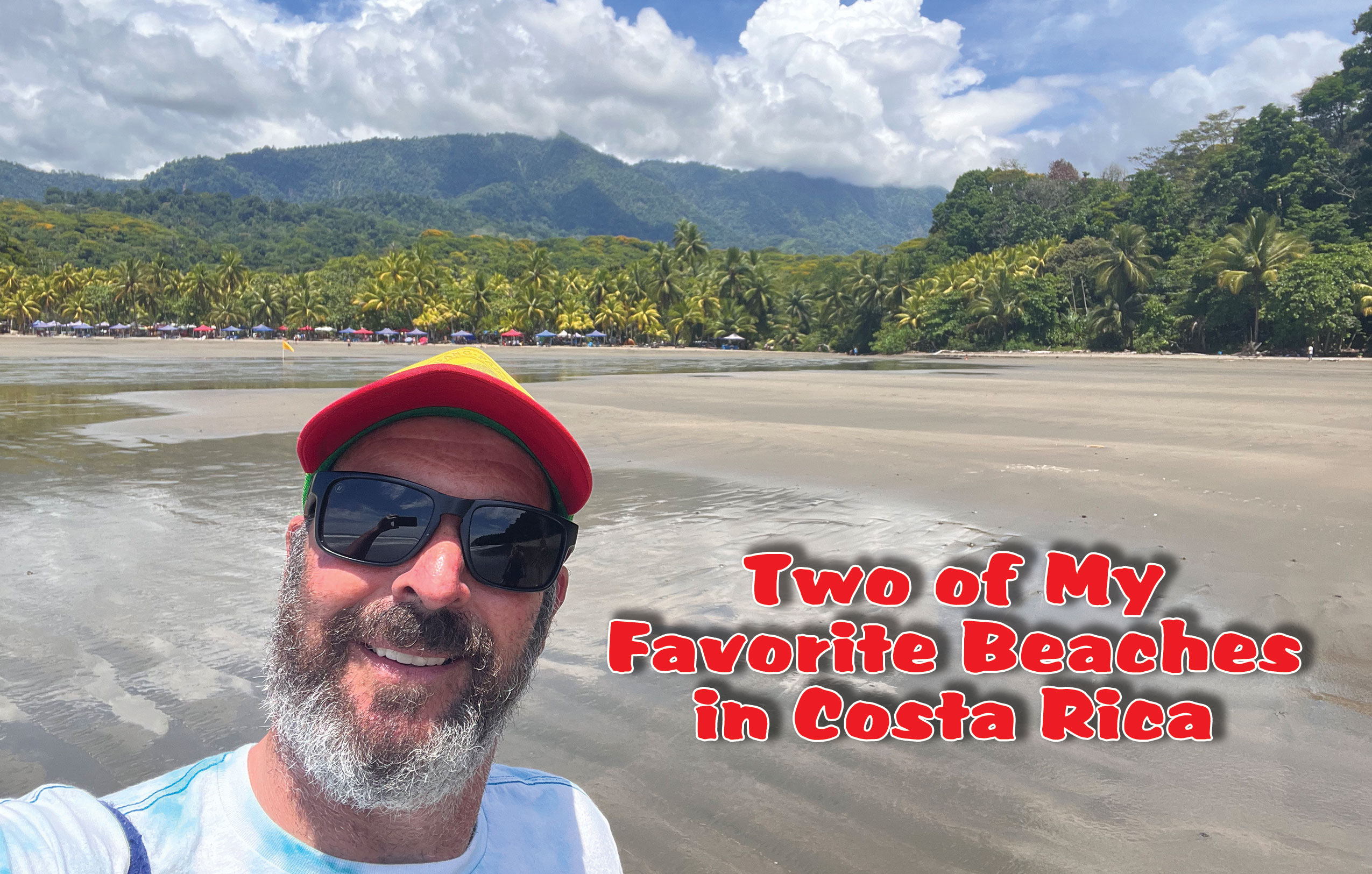Two of My Favorite Beaches in Costa Rica
 Costa Rica has more than 800 miles of coastline divided between the Pacific and Caribbean Sea, and over 300 beaches. Two of my favorites are Playa Ventanas just south of Uvita and Playalinda just north of Dominical. Both of these are an easy drive from Manuel Antonio. One has been already discovered while the other is still completely undeveloped.
Costa Rica has more than 800 miles of coastline divided between the Pacific and Caribbean Sea, and over 300 beaches. Two of my favorites are Playa Ventanas just south of Uvita and Playalinda just north of Dominical. Both of these are an easy drive from Manuel Antonio. One has been already discovered while the other is still completely undeveloped.

Playalinda is a sandy stretch of coastline between Matapalo and Playa Guapil. There is a straight, well-graded unpaved road leading directly to its one entrance. When you are 200 meters from the sand there is a low rise in the road that divides a tiny piece of mangrove. If you stop and look, you will see many species of birds and possibly a caiman resting in the brackish water. When you reach the coast you can turn north or south along a sandy road that is lined with palm trees on both sides. These palms provide shade for your vehicle, but be sure to not park under them due to falling coconuts. The farther you drive north or south the fewer people you will see and eventually the road will deteriorate as you approach a rivermouth that borders each end. Inland from the coast are fields with cattle and small pockets of forest.

When you park, be sure to leave nothing in your vehicle and when you go to swim, leave nothing of value on the beach. Once in a while someone will walk bye to sell you coconut water or a truck will have fresh ceviche for sale. I always buy one in the hopes that that person will keep an eye on my vehicle. The waves are best only around peak high tide and generally break smaller than in Dominical. When I am out surfing there I can look north and south for miles and not see another surfer. Looking back towards the coast you will only see rainforest covered mountains with no buildings along the beach for as far as the eye can see. On a clear day you can see as far south as Dominicalito point and the islands off Manuel Antonio to the north.
The other beach, Playa Ventanas, used to be the same way. There was one man who lived there and planted coconut palms in rows along the coast. There was no road to the beach so you had to park 400 meters away and hike the rest of the way in. When you arrived the first thing you notice is two caves at the northern end. Both caves are about three meters wide and extend all the way out to the ocean. At low tide when the waves are small you can walk almost all the way to the other end with tiny waves lapping up to your knees. At high tide when there are waves you can hear a thunderous boom as they crash through the cave and then it will spit ocean spray all the way across the beach into the palm trees.

The beach itself looks like a pirate cove. You can walk south a few hundred meters along the dark brown sand and looking back will see the jungle towering behind you. When it’s clear you see mountains rising thousand meters in the distance with just a few homes speckled amongst the emerald green rainforest. At low tide the beach is a couple of hundred meters wide and when it is small provides great waves for beginners. At higher tides there is a short right-breaking wave just to the south of the caves. The off shore islands also make this spot feel like a tropical paradise.
In the last few years though this beach has become a lot more popular. They constructed a road, a pay station for cars, and a parking lot right behind the palm trees. There are now lifeguards here, supported by the local community. On the weekends tour buses visit with dozens of locals coming to enjoy this formerly tranquil setting. Now there are a dozen vendors selling drinks, beach toys and towels, food, and renting out beach chairs and umbrellas. It is a lot more crowded than before, but once you are in the water looking back it is still breathtaking.
If you are looking for some off the beaten path beaches to explore and surf if you want, then visit my website where I have a map of over 70 surf breaks and hundreds of photos of amazing places to see in Costa Rica. crsurf.com/costa-rica-surf-beaches/

